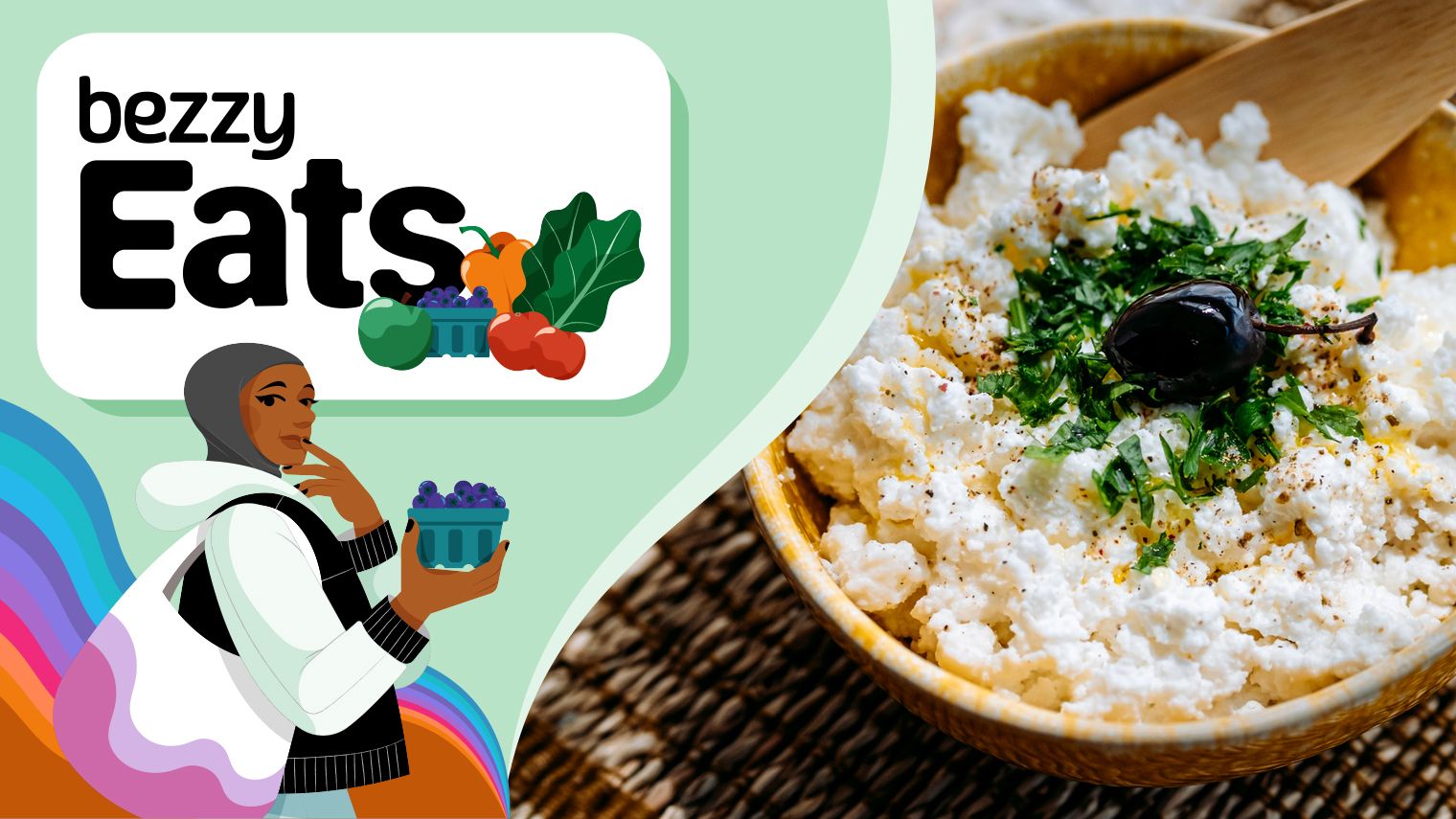Prebiotics and Probiotics: Quick Guide to Feeding Your Gut
September 25, 2024
Content created for the Bezzy community and sponsored by our partners. Learn More

Photography by Vera Lair/Stocksy United
We’re learning that what’s good for your gut is good for your body. Here’s how to incorporate these foods into your routine.
Your gut is home to trillions of bacteria, viruses, and fungi that live in your digestive tract. When these organisms are healthy and balanced, your well-being gets a boost.
Your gut plays an important role in your health in a variety of ways, including immune function and metabolic, neurological, and cardiovascular health.
Why? One reason is that a healthy gut may help reduce inflammation, which is a factor in many chronic diseases.
A nutritious diet can go a long way in fostering a healthy gut microbiome — all the microorganisms that make up your gut. Foods deliver a variety of microorganisms called probiotics and prebiotics.
You can get prebiotics and probiotics from supplements, but these products are not reviewed by the U.S. Food and Drug Administration (FDA). Many supplement brands make health claims without scientific evidence and come at a high price.
The good news is you can get prebiotics and probiotics from foods you may already have in your kitchen. Keep reading to learn about probiotics and prebiotics, plus tips for adding more to your diet.


What are probiotics?
Probiotics are live microorganisms, including strains of bacteria and yeasts. Common strains of bacteria you might see added to some foods are Lactobacillus and Bifidobacterium.
These good gut bugs help the body digest food, make nutrients, and keep your immune system running like a well-oiled machine.
When you consume probiotics, you’re adding “good” bacteria to your digestive tract. A healthy microbiome is one that is diverse, rich, and balanced. You can incorporate the good guys into your diet by adding these foods to your plate:
- semi-hard cheeses like cheddar, mozzarella, and gouda (look for “live cultures” on the food labels)
- cottage cheese
- cultured buttermilk
- kefir (a drink made from fermented milk)
- kimchi
- miso
- pickles
- sauerkraut
- fermented soy, such as tofu and tempeh
- yogurt
What are prebiotics?
Since probiotics are live organisms, they need food to eat so they can thrive. That’s where prebiotics come in.
Prebiotics are types of fiber that supply “food” to the probiotics.
Fiber is the indigestible part of a carbohydrate. When it comes to your digestion, fiber helps slow down the movement of food in your GI tract, which helps you stay full and satisfied. That’s the well-known role of fiber in the diet.
But certain types of fiber play another role. After you eat foods containing prebiotic fiber, something really special happens: the probiotics in your gut “feast on” and ferment these fibers.
This fermentation produces compounds that are linked to liver and heart health, glucose and insulin function, less constipation, and less inflammation. Eating more prebiotic fiber can also help improve the diversity and richness of your gut microbiome.
One type of prebiotic fiber is inulin, found in asparagus, bananas, and chicory root, for example.
You can find prebiotic fiber in many foods, such as:
- asparagus
- banana
- barley
- beans
- chicory
- cocoa
- cow’s milk
- garlic
- honey
- Jerusalem artichoke
- microalgae (chlorella, spirulina)
- nuts
- onion
- peas
- rye
- seaweed
- soybean
- sugar beet
- tomato
- wheat bran
Some foods contain both prebiotics and probiotics, and the combination is called a synbiotic. Cheese, kefir, sauerkraut, and certain types of yogurt are synbiotics.
How to add probiotics and prebiotics to your diet
When your goal is to feed your gut, here are some great ways to get more of these foods into your eating routine:
- Try kefir: Drink a small glass with breakfast.
- Use better sweeteners: Sweeten plain yogurt or cottage cheese with a little honey or mash up a banana to mix into yogurt. (Bonus: This trick makes your yogurt sweet without added sugar.)
- Add some fermented crunch: Use sauerkraut, pickles, or kimchi as a zingy addition to a sandwich, or toss into a salad.
- Make it soy good: Slice tofu and tempeh for sandwiches or use as a protein source in your next stir-fry. You can also blend silken tofu into smoothies and salad dressings.
- Eat more beans: Stir black beans into soups and chilis, top salads with lentils or white beans, and snack on crispy chickpeas.
- Snack on synbiotics: Pair mozzarella with tomato and garlic for a refreshing afternoon snack.
- Opt for a side of probiotics: If you are going out for sushi or Thai food, order miso soup or seaweed salad to start.
- Cook simple veggies: Grill, roast, or saute asparagus, tomatoes, peas, or onions to serve as a yummy side for chicken, a lean cut of beef, or fish.
Medically reviewed on September 25, 2024
5 Sources


Like the story? React, bookmark, or share below:
Have thoughts or suggestions about this article? Email us at article-feedback@bezzy.com.
About the author